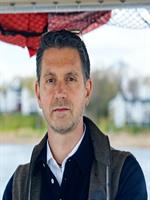 Citizen Science & Climate Change
Citizen Science & Climate ChangeCitizen Science in Environmental Monitoring
Oral Presentation
Prepared by M. Pascucilla
East Shore District Health Department, 688 East Main Street, Branford, Connecticut, 06437, United States
Contact Information: mpascucilla@esdhd.org; 203-619-1286
ABSTRACT
It is clear that there are many people who, for whatever reason, do not believe the research of climate change. Comparatively, the pandemic has shown we have short attention spans, nor do many Americans believe and/or trust the science and research that has been presented. Therefore, this project in partnership with Yale University would be used to combine Connecticut specific climate change research that is available statewide, and create a photojournalism collection of written and in person stories/interviews. It will be used to document and educate Connecticuter’s, A.K.A., Nutmegger’s, by sharing real stories and visual evidence of climate change that is currently impacting southern New England, and its quintessential towns and cities. This project will empower our residents to engage in this citizen science project to create public interest and motivate a community movement to address climate change and community resilience to the changes that are currently happening. This information would be gathered through interviews and surveys, photos and history review of our towns, the weather, the environment as well as the health of our residents.
As with any research, this project will work within the same ethical approaches to objectively communicate facts, without bias, to educate our residents that climate change has been and is currently in play and impacting every aspect of our anthropological ecosystem – physical, social, financial, emotional, etc.… Our intent is to tell the visual “human story” of climate change, supported by state and local research with the end goal to promote awareness and positive, sustainable behavioral population change to soften mankind influences on our local ecology.
This climate change project, through its photojournalism will also compare and research the human impacts both from coastal and non-coastal, inland communities, as well as urban and rural living environments. While the climate change impacts can be similar, there are varied differences in weather-related consequences between direct waterfront marine communities and inland communities. This is especially noticeable with the impacts and aftermath of flooding, tide surge, extreme heat events, vector-borne diseases, as well as the social, emotional and wellness influences due to varied socio-economic demographics of populations. project has the following aims/goals:
Aim 1 is to provide a base of initial data and research including a review of existing studies and recommendations among the selected communities.
Aim 2 - create a photojournalism collection of stories and visuals with selected communities, to include coastal, non-coastal, urban and rural communities and their populations. The intended outcome is to demonstrate that climate change, while at its baseline/core impacts everyone, the challenges vary greatly depending on one’s social economic status and the community one residents within.
Aim 3 will compare, through the research, the difference and necessary response between both coastal and inland communities, and establish applied best practices with a focus on vulnerable populations between rural and urban living settings.
Aim 4 will examine the relationship between public health and climate within existing Connecticut’s data sets to include health impacts such as respiratory and cardiovascular disease, injury and premature deaths related to extreme weather events, vector borne disease trends (current and future) and threats to mental health and safety concerns. Specifically, how local communities can engage, assist and enable their residents with these real concerns.

